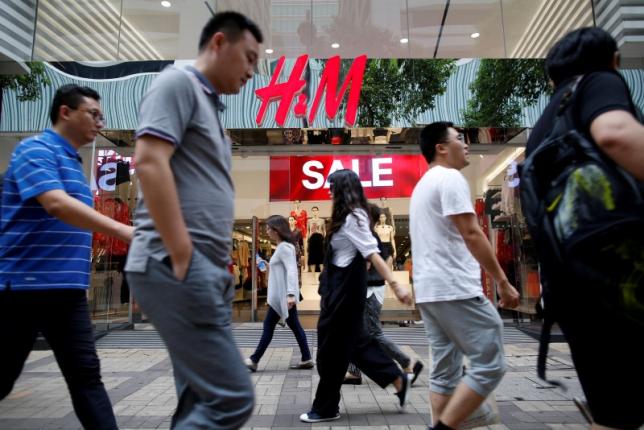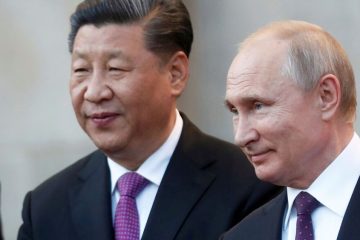Chinese Tourists Are Back. They Just Aren’t Shopping Like Before.

The retail world used to cater to Chinese tourists. Luxury shops opened wherever they went, and Parisian department stores hired Mandarin speakers. Mom-and-pop stores in Hong Kong were replaced by vendors offering products Chinese tourists demanded, such as milk powder and medicines.
Now, after being grounded for three years during the pandemic, Chinese travelers are taking to the skies again. But they don’t look or spend the same.
The new wave of traveling shoppers is dominated by people under 40, and they are forging less of a well-traveled path, eschewing the big bus tours that drop off tourists at malls and shopping districts. Many use an app called Xiaohongshu, nicknamed “China’s Instagram” and translated as “Little Red Book.” It helps them find new spots to visit and take selfies.
That is affecting companies that have made big bets on “travel retail,” or operating stores in tourists’ favorite destinations. The cosmetics company Estée Lauder saw its shares drop sharply on Nov. 1 after a profit warning that was primarily driven by expected pressures on its Asia travel retail business and a slower-than-expected recovery in mainland China. The company has invested in stores at various checkpoints of travelers’ journeys: at airport gates, border shops, shopping malls in popular tourist destinations and duty-free zones.
Last month Shiseido, a Japanese rival, cut its full-year profit forecast by 36%, citing weakness in its China and travel-retail segments. Luxury companies such as France’s LVMH have been downgraded by analysts, including Barclays, because of softer demand from Chinese consumers.
In late November, the luxury department store Harvey Nichols—which sells brands such as Oscar de la Renta, 3.1 Phillip Lim and REDValentino, along with beauty lines such as Chanel and some of Estée Lauder’s products—said it would be closing one of its two stores in downtown Hong Kong.
“Chinese tourists coming to Hong Kong are no longer focused on shopping as they used to be before the pandemic,” Dickson Concepts, the operating company for Harvey Nichols, said in a regulatory filing. This “has now been proven…despite the reopening of the borders in February,” it said.
The company also pointed to the significant growth of e-commerce during the pandemic, the rapid development of the luxury brands’ presence in China and the narrowing of price differences between China and Hong Kong—a trend mirrored in other favorite Chinese-tourist destinations.
Estée Lauder said it expects travel retail to continue reaching new consumers globally in the long term. Shiseido and LVMH didn’t respond to requests for comment. Dickson Concepts declined to comment.
Yu Jin Huan, a 24-year-old export executive from Guangdong province, was on a day trip to Hong Kong on a recent Saturday. Armed with advice from Xiaohongshu, the social-media app, she and a friend were posing for photos along the waterfront in the city’s Kennedy Town neighborhood. The spot has become so popular with tourists—some step into traffic to get the perfect shot of the sunset—that the government put up signs along the road: “Do not stay and take photos on carriageway. Offenders are liable to prosecution.”
Like many tourists from the mainland these days, Yu is less interested in shopping and more interested in “punching in,” or “daka” in Mandarin—a term many use to represent the bingolike drive to visit as many trendy spots as possible. For many tourists, sometimes armed with professional cameras, getting that image of themselves in a coveted destination has become the ultimate souvenir.
“I can buy anything I want online in China,” said Yu, who used to come to Hong Kong on day trips just to buy cosmetics. “Now I’m seeking different things on my trips—I want to get an authentic experience.” After taking their waterfront photos, Yu and her friend were planning to go on one of many city walks recommended by the app.
Social-media apps such as Xiaohongshu have played an important role in shaping the behavior of young, relatively wealthy and educated tourists, said Jian Lin, a media scholar who studies digital platforms and cultures at the Chinese University of Hong Kong. Lin himself has visited the app to find interesting places and cafes, using it on a recent trip to Dali, a cultural city popular with tourists in China’s southwestern Yunnan province.
On Xiaohongshu, which also features beauty, pets and relationship advice, influential users pose for photos in famous places. Shopping, though, is no longer as popular a traveling activity, data show.
Young Chinese travelers have emerged as the main force in outbound tourism, taking the lead in shaping the preferences and consumption patterns of the market, said Subramania Bhatt, who heads up China Trading Desk, which tracks travel data through its own quarterly survey.
Around 63% of the travelers are under 40 years old, according to the company’s data, while its most recent survey suggests that there is a growing inclination toward creating personal travel narratives—and that shopping is taking a back seat.
Part of that is related to a weakened Chinese economy that is digging into discretionary budgets, while many Chinese are increasingly shopping at home, Bhatt added.
Some signs point to the appetite for travel coming back. During the recent Double 11 shopping festival, more than 400,000 ticket packages—including all-you-can-fly passes and nearly 2.5 million accommodation packages—were sold, according to Fliggy, a travel platform owned by the Alibaba Group. Fliggy particularly highlighted the preferences toward more-flexible travel options.
While domestic sales in China for the luggage maker Samsonite have accelerated in recent months, purchases by Chinese tourists abroad—for example, those buying luggage in Europe to bring home their shopping hauls—are still catching up.
Based on data Samsonite tracks, including credit-card information on country of origin of purchases at its stores, the company estimates that Chinese outbound travel is still about 50% of prepandemic levels.
Samsonite expects sales from these customers to continue rising, in recent months launching its biggest ad campaign in cities across China.
“We think Chinese tourists will really be back by the end of 2024,” said Kyle Gendreau, the company’s chief executive. “We are ready for the comeback.”






